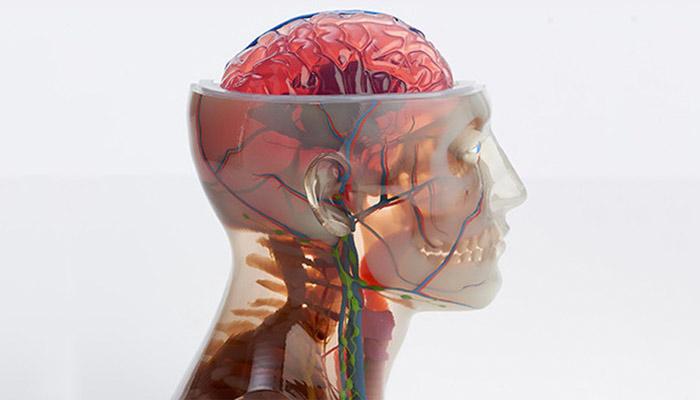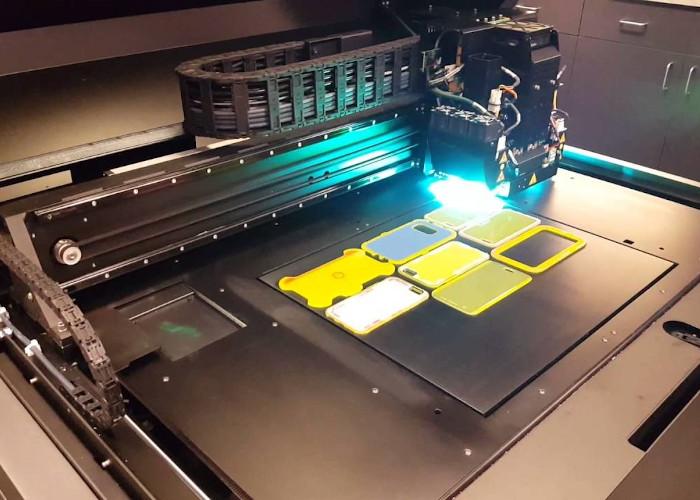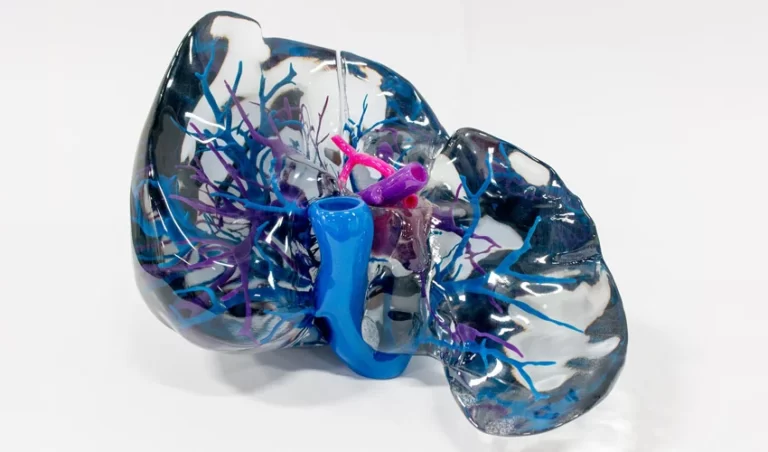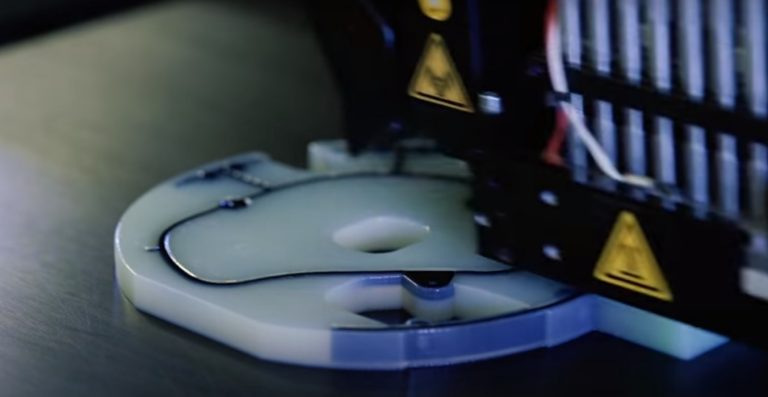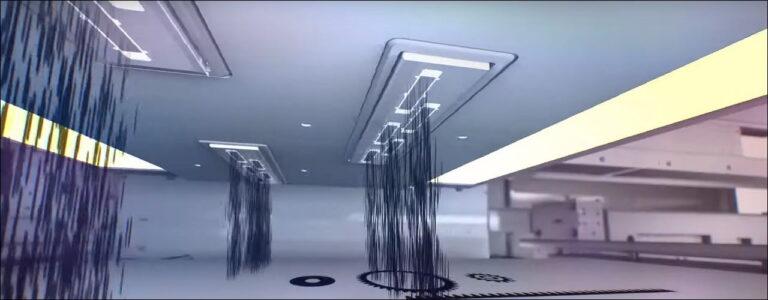All about Material Jetting 3D Printer
Introduction
Modern additive manufacturing techniques like material jetting and 3D printing have changed how we think about building things. Material jetting 3D printers can produce complicated structures with unmatched accuracy and surface smoothness by depositing tiny droplets of photopolymer or other materials onto a build surface. Material jetting 3D printing is a flexible and effective method for turning ideas into reality. It is used by dentistry industry professionals, researchers exploring new materials, and artists pushing creative limits. This blog article will explore the history, capabilities, and future uses of material jetting 3D printing in various sectors.
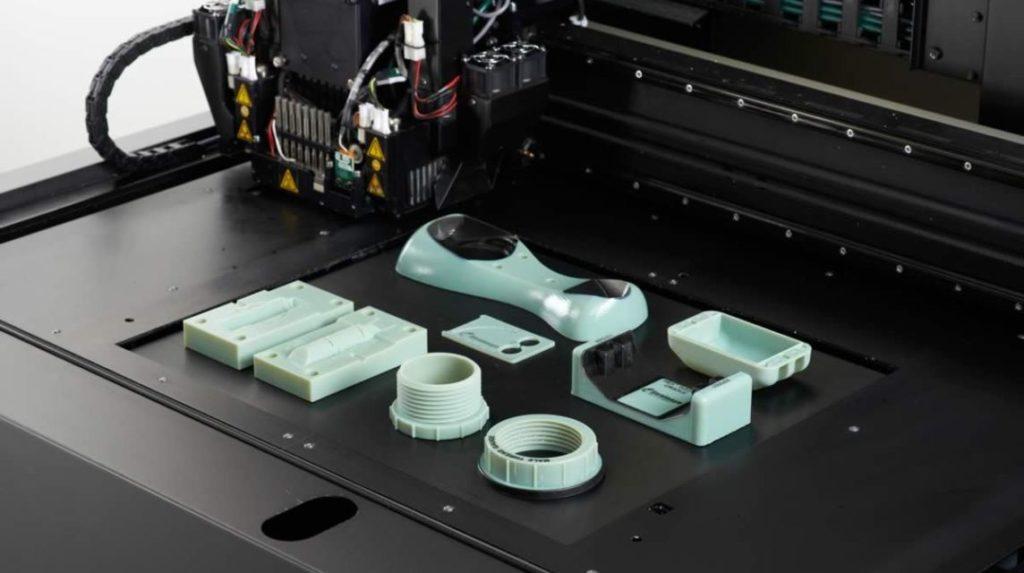
Definition of material jetting 3D printing
A cutting-edge additive manufacturing technique called material jetting 3D printing employs fine print heads to layer-by-layer tiny deposit droplets of material onto a build surface. Material jetting 3D printing produces intricate and precise objects with a smooth finish. It uses various materials, including photopolymers, metals, ceramics, and biological materials like cells and tissues. Specialist software divides a 3D model of the object into thin layers to start the procedure.
The print head then releases the material after being solidified by heat, light, or chemical processes. Each layer finishes printing, and the 3D printer lowers the build platform. Then, the printer prints the subsequent layer on top of the preceding one until it completes the entire item. Numerous sectors, including dentistry, aerospace, jewelry manufacturing, and prototype, frequently employ material jetting 3D printing. Material jetting 3D printing is popular for producing complex parts with precision, flexibility, and customization.
A brief history of material jetting 3D printing
Material jetting 3D printing has its roots in the inkjet printing industry, which started to take off in the 1950s, which is where 3D printing got its start. The first inkjet printers used continuous inkjet techniques to blast an endless stream of ink droplets onto the paper. A new inkjet printing technology called Drop-on-demand (DOD) was launched in the 1980s. It allowed for more precise control over the ink droplets. MIT researchers adapted inkjet deposition technology for 3D printing in the 1990s. They called it “3D printing using inkjet deposition” or 3DPID.
An inkjet print head applied a binder substance to cover a powder bed, building solid objects layer by layer. Material jetting 3D printing has seen significant advancements in technology, software, and materials. It is now a cutting-edge additive manufacturing technology with unmatched accuracy and detail capabilities for producing complex objects.
How Material Jetting 3D Printing Works
Material jetting 3D printing needs many hardware and software elements to work. It’s a challenging technique to create intricate objects. The technique relies on precise droplet deposition on a build plate. This section will thoroughly examine the operation of material jetting 3D printing. This section covers material jetting 3D printing, including its components, materials, and advantages. Learning about the physics of this technology can help you make informed decisions, regardless of your experience level.
Explanation of the material jetting process, including hardware and software components
Material jetting 3D printing utilizes a complex interaction of hardware and software components. This highly accurate and adaptable additive manufacturing process produces intricate and detailed items. This section looks at the material jetting 3D printing process, including print heads, materials, and specialized software. Optimizing the printing process and understanding the physics of material jetting can help achieve the best results. Whether in dentistry, engineering, or art, understanding material jetting’s potential is essential.
material jetting hardware
Material jetting 3D printing is important for precise droplet deposition. The print head is crucial hardware that controls the accurate spread of material. Material jetting 3D printers use different types of print heads, such as piezoelectric, thermal, and electrostatic. Depending on the particular materials and printing needs, each of these kinds offers unique benefits and drawbacks.
Material jetting 3D printers require a build platform to move up and down for layer-by-layer printing. The print head is also necessary for the printing process. Material cartridges that store ink or resin and a curing unit to harden the material after putting it onto the build surface are part of the hardware. Achieving high precision and accuracy that material jetting 3D printing is known for relies on this equipment.
The print heads
One of the most important parts of material jetting 3D printing equipment is the print head.The print head is responsible for placing material droplets onto the build plate to create a 3D object. Different types of print heads are used, including piezoelectric, thermal, and electrostatic. Thermal print heads evaporate material with heat, while piezoelectric print heads use crystals to dispense the material in droplets.
The material is drawn to electrostatic print heads using an electric field. Then, it discharges onto the build plate. Each print head type has unique benefits and drawbacks based on materials and printing requirements. Thermal print heads work well with high-viscosity materials, while piezoelectric print heads are known for precision and versatility. Choosing the print head is critical for the quality and performance of material jetting 3D printing gear.
The piezoelectric print head
Piezoelectric print heads use a piezoelectric crystal to generate pressure and droplets of material. Piezoelectric print heads have high precision and versatility in dispensing various materials with different viscosities and melting temperatures. They operate by subjecting the piezoelectric crystal to an electrical field, causing it to expand and compress. This generates pressure, which propels the material out of the nozzle. This printing method provides excellent control over droplet size and location, making it ideal for producing objects with intricate details and fine features.
Thermal Print Head
Thermal print heads use a heating element to evaporate the substance and create tiny bubbles that push the substance out of the nozzle. Waxes and polymers work best with these print heads. They require high temperatures and have high viscosity. The thermal print head heats the material in the nozzle to a high temperature. This process vaporizes the material and produces bubbles that force it out of the nozzle. This method makes it possible to control the flow of material very precisely and to print objects with a lot of detail and accuracy.
Electrostatic Print Head
Electric field draws material to print head. Electrostatic print heads discharge it onto build surface. High printing speed and accuracy, with ability to print a variety of materials, including conductive and insulating. Electrostatic print heads function by applying an electric field to the material, charging and attracting it to the print head. Once the print head puts the material on the build surface, the material cures to make a solid object. This method is great for a wide range of uses, such as microfabrication and bioprinting, because it makes it possible to print objects with complicated shapes and high accuracy.
Choosing the right print head
Choosing the right print head is a crucial aspect of material jetting 3D printing, as it can significantly impact the quality and efficiency of the printing process. Material jetting 3D printing uses several types of print heads. Each print head has unique advantages and disadvantages. Knowing the pros and cons of different print heads can help users choose the right one for their material and application needs. The table below compares three common types of print heads in material jetting 3D printing: piezoelectric, thermal, and electrostatic. It lists their advantages, disadvantages, and suitable materials, enabling users to make an informed decision when selecting a print head.
| Print Head Type | Advantages | Disadvantages | Materials Used |
|---|---|---|---|
| Piezoelectric | High accuracy, precise control of droplet size and placement, ability to dispense a wide range of materials | Expensive, prone to clogging, limited range of nozzle sizes | Photopolymers, ceramics, metals, plastics, waxes |
| Thermal | Better suited for high-viscosity materials, high accuracy, and detail | Slow printing speed, requires high temperatures, limited range of materials | Polymers, waxes, metals |
| Electrostatic | Ability to print a wide range of materials, high speed, and precision | A limited range of materials, not suitable for some types of objects, may require additional post-processing steps | Conductive and insulating materials, photopolymers |
Balancing Precision and Compatibility
Each print head type has its own pros and cons. Choose the print head based on materials and printing needs. Piezoelectric print heads are precise and versatile, but not ideal for large nozzle diameters or clogging issues. Thermal print heads may not work for specific materials or high printing speeds, even if they work well for high-viscosity materials.
Always consider the specific application and needs when selecting a print head.
material jetting software
The software for material jetting 3D printing is important. It manages printing parameters like material flow and droplet size. It also controls the movement of the build platform. The software takes the digital 3D model of the object and slices it into thin layers. Then, the software sends these layers to the printer. The printer prints the object layer by layer. Material jetting software typically includes a user interface that allows the user to control and adjust the printing parameters, such as layer thickness, print speed, and material type.
The software has support generation tools. These create structures for overhanging parts. Post-processing tools also exist. They edit the printed object. They include smoothing or texturing. Material jetting software enables high precision and accuracy in this technology. Material jetting software makes the printing process more efficient and customizable. Overall, material jetting software plays a crucial role in these aspects.
Types of materials
3D printing using material jetting gives a flexible and accurate way to make complicated and complex items. Material jetting 3D printing can use plastics, ceramics, metals, and biological materials. This allows for use in healthcare, aerospace, and automotive industries. In this section, we’ll look at the materials and their properties, benefits, and uses. Designers and manufacturers can choose the best material for their project by understanding the characteristics of each material.
main material groups
Photopolymers
Photopolymers are often used in material jetting 3D printing because they harden when exposed to UV light. Due to their high resolution and detail, they are perfect for making small, complicated parts with complicated shapes. Photopolymers can also be made to have certain qualities, like being very flexible or resistant to heat. This makes them great for a wide range of uses, from production to prototyping.
Ceramics
Ceramic materials are used in material jetting 3D printing. They have unique qualities such as high strength, durability, and heat and wear resistance. They are suitable for producing items like dental implants or aircraft components that require accuracy and fine detail. Moreover, ceramic materials can be designed to have particular qualities like thermal insulation or electrical conductivity.
Metals
People often use metals like titanium, aluminum, and stainless steel in material jet 3D printing due to their strength, durability, and heat resistance. Metal 3D printing produces custom or complex geometries that traditional methods can’t make. You can combine metal elements with other materials, such as ceramics, to make composite structures with unique properties.
Bioprinting materials
Scientists are increasingly using living cells and proteins in 3D printing to create tissues and organs for medical use. Material jetting 3D printing can revolutionize regenerative medicine and healthcare. It provides a precise and adaptable approach for building complex biological structures. To achieve successful bioprinting, one must precisely control the temperature and humidity to keep the materials viable during the printing process.
compare materials
| Material Group | Use | Advantages | Disadvantages |
|---|---|---|---|
| Photopolymers | Prototyping, dental models, jewelry, consumer products | High resolution and detail, can be formulated for specific properties, a wide range of colors, and finishes | Brittle may degrade over time, limited range of mechanical properties |
| Ceramics | Aerospace components, dental implants, decorative objects | High strength, durability, and resistance to heat and wear can be formulated for specific properties, a wide range of colors, and finishes | Fragile, limited range of mechanical properties, high cost |
| Metals | Aerospace components, automotive parts, medical implants | High strength, and durability, can withstand high temperatures, can be combined with other materials for unique properties | High cost, limited range of materials available, post-processing may be required |
| Bioprinting materials | Medical implants, tissue engineering, drug testing | Ability to create functional tissues and organs, precise and versatile method for creating complex biological structures | Requires specific conditions, such as temperature and humidity, to maintain viability, limited range of materials available, high cost |
Note that the table does not include all possible materials for material jetting 3D printing. Each material has its own benefits and drawbacks.
Comparison with other 3D printing technologies
There are currently several types of 3D printing methods on the market as the technology for this process continues to develop. Material Jetting 3D printing is one of these technologies, each with its own set of advantages and disadvantages. Understanding how material jetting 3D printing compares to other 3D printing techniques is crucial. Comparing material jetting 3D printing to other well-known 3D printing techniques, including fused deposition modeling (FDM), stereolithography (SLA), and selective laser sintering (SLS), this section tries to examine the benefits and drawbacks of each method. One may choose the procedure that is most appropriate for their particular demands and applications by being aware of the distinctions between these technologies.
Fused Deposition Modeling (FDM)
FDM is a popular 3D printing technology that works by melting and extruding thermoplastic filaments to build up layers. FDM is a good choice because, compared to other 3D printing methods, it is not too expensive. However, FDM prints can be limited in terms of resolution and detail compared to material jetting prints. Additionally, FDM prints may have visible layer lines and require post-processing to achieve a smooth finish.
Stereolithography (SLA)
SLA works by using a laser to cure liquid resin into solid layers. This process results in highly detailed and precise prints with a smooth surface finish. However, SLA can be more expensive than material jetting, and the liquid resin can be messy and difficult to handle. SLA prints may also be brittle and prone to breaking if not handled carefully.
Selective Laser Sintering (SLS)
SLS uses a laser to sinter powdered materials together to form solid layers. SLS prints can be very detailed and accurate, and they can be made out of a number of different materials, such as metals and ceramics. But SLS can be more expensive than material jetting, and the after-processing needed to get rid of extra powder can be messy and take a long time. Additionally, SLS prints may have a rougher surface finish compared to material jetting prints.
In general, material jetting 3D printing offers high resolution and detail, with the ability to print in a wide range of materials, including ceramics, metals, and bioprinting materials. Material jetting can also produce parts with smooth surface finishes and complex geometries. However, it may be more expensive than other 3D printing technologies, and it may not be suitable for large-scale production due to slower print speeds. By considering the advantages and disadvantages of material jetting compared to other 3D printing technologies, you can determine which process is best suited to your specific needs and applications.
Comparison of 3D Printing Technologies: Advantages and Disadvantages Compared to Material Jetting
| 3D Printing Technology | Advantages | Disadvantages | Comparison to Material Jetting |
|---|---|---|---|
| Fused Deposition Modeling (FDM) | Inexpensive | Limited resolution/detail | Material jetting has higher resolution and detail |
| Stereolithography (SLA) | Highly detailed, smooth surface finish | Expensive, messy liquid resin | Material jetting has a wider range of materials |
| Selective Laser Sintering (SLS) | Highly detailed, range of materials | Expensive, messy post-processing | Material jetting has a smoother surface finish |
| Material Jetting | High resolution/detail, range of materials, smooth surface finish, complex geometries | Expensive, slower print speeds | – |
It’s worth noting that the advantages and disadvantages of each technology can vary depending on specific use cases and materials. However, this table provides a general overview of the main strengths and weaknesses of each technology, and how they compare to material jetting.
Applications of Material Jetting 3D Printing
Several sectors, including aerospace, automotive, medical, and consumer products, have used material jetting 3D printing. This technique is excellent for manufacturing prototypes, limited production runs, and bespoke components because it offers great resolution and detail, a variety of materials, and the capacity to generate complicated designs. This section will examine some of the most widespread uses of material jetting 3D printing and how they are reshaping the industrial sector.
material jetting application in dentistry
Material jetting 3D printing has found numerous applications in dentistry, revolutionizing the way dental prosthetics are created. One common example is the production of dental models for crowns, bridges, and dentures. Traditionally, these models were created using messy and time-consuming techniques such as plaster casting. With material jetting, dental professionals can create highly accurate and detailed models in a matter of hours, reducing lead times and increasing patient satisfaction.
Another example of material jetting in dentistry is the production of clear aligners. Clear aligners are becoming an increasingly popular alternative to traditional braces for orthodontic treatment. Using material jetting, dental professionals can produce highly accurate and customized aligners for each patient, resulting in better outcomes and improved patient comfort.
A real-world example of material jetting in dentistry is Align Technology’s Invisalign system. Invisalign uses a series of clear aligners to gradually shift a patient’s teeth into the desired position. The aligners are produced using material jetting 3D printing technology, which allows for highly accurate and customized aligners to be produced quickly and efficiently. With over 9 million patients treated worldwide, Invisalign is a prime example of how material jetting is transforming the dental industry.
material jetting application in the aerospace industry
Material jetting 3D printing has a wide range of applications in the aerospace industry, where precision and durability are of the utmost importance. One example is the production of engine components such as fuel nozzles. These nozzles are subject to high temperatures and pressures, making them challenging to produce using traditional manufacturing methods. Material jetting allows for the creation of complex geometries and internal channels that would be impossible to produce using traditional methods.
MJ technology is also used in the aerospace industry to make parts that are light and complicated, like brackets, housings, and ducts. Material jetting makes it possible to make these parts with high accuracy and little waste, which saves money and makes them work better.
A real-world example of material jetting in aerospace is the production of rocket engine parts by SpaceX. SpaceX has used material jetting 3D printing to produce parts for the Falcon 9 rocket engine, including the injector plate that delivers propellant to the engine’s combustion chamber. Material jetting allowed SpaceX to produce this complex part with high accuracy and minimal material waste, resulting in a more efficient and cost-effective manufacturing process.
material jetting application in the jewelry-making
MJ 3D printing is also finding applications in the jewelry-making industry, allowing for the production of highly detailed and complex designs that would be challenging to produce using traditional manufacturing methods. Jewelry designers can use material jetting to create intricate designs with fine details and complex geometries, resulting in one-of-a-kind pieces that stand out in a crowded market.
One example of material jetting in jewelry-making is the production of custom wedding rings. Couples can work with a jewelry designer to create a unique design that is then produced using material jetting 3D printing technology. Material jetting allows for the creation of highly accurate and detailed rings, resulting in a perfect fit and a truly personalized experience.
Another example of material jetting in jewelry-making is the production of fashion jewelry. Fashion jewelry designers can use material jetting to create unique pieces with intricate details and complex geometries. Material jetting allows for the production of lightweight and durable pieces, resulting in a high-quality product that can stand up to daily wear and tear.
Advantages and Limitations of Material Jetting 3D Printing
Material jetting 3D printing has several advantages that make it a popular choice for a variety of applications. One of the biggest advantages is its ability to produce highly detailed and complex geometries with high accuracy. This is due to the extremely small size of the droplets of material that are jetted onto the build platform. Material jetting also allows for the production of multicolor and multi-material parts, making it a versatile technology for a wide range of applications. Additionally, material jetting allows for the use of a wide range of materials, including polymers, metals, and ceramics, further expanding its range of applications.
However, there are also limitations to material jetting 3D printing. One limitation is its relatively slow print speed, making it less suitable for large-scale production. Another limitation is the size of the build platform, which is typically smaller than other 3D printing methods. Material jetting also requires post-processing to remove any support material used during the printing process, which can be time-consuming and require additional equipment. Finally, material jetting 3D printing can be more expensive than other 3D printing methods due to the specialized hardware and software required.
Overall, material jetting 3D printing is a powerful technology with many advantages that make it a popular choice for a wide range of applications. However, it is important to understand its limitations and consider other 3D printing methods when appropriate for a particular project or application.
Advantages
High Accuracy and Detail
Material jetting 3D printing achieves high accuracy and detail in complex shapes due to the extremely small size of the material droplets that it jets onto the build platform. This makes it possible to create intricate and precise parts that may not be feasible with other 3D printing methods.
Multicolor and Multi-Material
One of the best things about material jetting is that it can make parts with more than one color or material in a single build. This makes it a versatile technology for a wide range of applications, including the production of customized and complex parts in industries such as healthcare, aerospace, and automotive.
Wide Range of Materials
Material Jetting can be used with a wide range of materials, including polymers, metals, and ceramics, which makes it a popular choice in many industries. This variety of materials makes it possible to make parts with different properties and traits, such as being flexible, strong, and able to conduct electricity.
High Surface Quality
Material jetting 3D printing is known for producing parts with high surface quality, thanks to the ability to produce tiny droplets of material. This is particularly advantageous in industries such as dentistry and jewelry-making, where surface finish is an important factor.
Design Freedom
Material jetting gives designers more freedom because it can make complicated shapes that may not be possible with other 3D printing methods. This makes it possible to make parts with fine details, complicated forms, and custom features that can be used in many different ways.
Limitations
Limited Build Volume
One of the biggest problems with material jetting is that it can only make a small amount of stuff at once. While the technology is capable of producing highly detailed and complex parts, it is often limited in terms of the size of the parts that can be produced. This can be a disadvantage for applications where larger parts are required.
Slow Production Time
Material jetting 3D printing is known for its slow production time. This is due to the fact that the technology produces parts by jetting small droplets of material onto the build platform, which can be a time-consuming process. This can be a disadvantage for industries where large volumes of parts need to be produced quickly.
Expensive:
Material jetting is one of the more expensive 3D printing technologies, due to the high cost of the hardware and materials involved. This can be a disadvantage for smaller companies or individuals who may not have the budget for the technology.
Limited Material Availability
Material availability is limited. Material jetting can use a wide range of materials, but not all of them can be used. This can be a problem for industries that need certain materials for their products.
Post-Processing Required
Material jetting parts require post-processing to remove support materials, which can be time-consuming and add to the overall cost of the production process. This can be a disadvantage for applications where parts must be produced quickly and cheaply.
Future of Material Jetting 3D Printing
The future of material jetting 3D printing is an intriguing subject to investigate, just as with any cutting-edge technology. This technology’s potential and capabilities are continually growing, and it will undoubtedly have a big impact on additive manufacturing in the future. We will examine some of the recent and prospective developments in material jetting 3D printing in this area, as well as how they could affect other sectors.
Emerging trends and technologies in material jetting 3D printing, including new materials and faster printing speeds
development of new materials
As the field of material jetting 3D printing continues to evolve, new trends and technologies are emerging that are changing the way we approach additive manufacturing. Developing new materials designed for use with material jetting 3D printing is an exciting trend. These materials offer improved performance and enable the creation of parts with enhanced properties like greater strength, durability, and heat resistance.
faster printing speeds
One of the most promising trends in material jetting 3D printing is the development of faster printing speeds. As with any manufacturing process, time is a critical factor in the production of parts. With faster printing speeds, material jetting 3D printers can produce parts more quickly and efficiently, reducing lead times and increasing productivity. There are several approaches to achieving faster printing speeds, such as the use of larger print heads or the optimization of print settings to reduce print time without sacrificing quality. This trend is particularly important in industries such as aerospace or automotive, where high volumes of parts are needed in a short amount of time. Faster printing speeds also open up new possibilities for on-demand manufacturing and rapid prototyping, allowing companies to quickly and easily test and refine their designs.
multiple materials
Another emerging trend in material jetting 3D printing is the use of multiple materials in a single build. This allows for the creation of parts with complex internal structures or parts that require the use of multiple materials with different properties. This technology is particularly useful in industries such as aerospace, where parts with intricate geometries and specialized functions are required.
use of artificial intelligence and machine learning
Advancements in software and hardware are also driving the development of new technologies in material jetting 3D printing. One such example is the use of artificial intelligence and machine learning to improve the accuracy and speed of the printing process. This technology can be used to optimize print settings and reduce errors, resulting in higher-quality parts and faster production times.
Overall, the emerging trends and technologies in material jetting 3D printing are exciting developments that are changing the way we approach additive manufacturing. With continued research and development, we can expect to see even more advancements in the future.
Potential future applications and impact on the industry
custom implants and prosthetics
The potential future applications of material jetting 3D printing are vast, and it has the potential to revolutionize several industries. One exciting area of application is in the medical field, where material jetting 3D printing can be used to create custom implants and prosthetics. For example, researchers have used material jetting to create an implantable device for the treatment of type 1 diabetes. The device consists of a 3D-printed reservoir filled with insulin-producing cells and a semipermeable membrane that allows nutrients and oxygen to enter while keeping the immune system from attacking the cells.
high-performance parts
Another potential application is in the production of high-performance parts for the aerospace industry. Material jetting can produce parts with exceptional accuracy and high-resolution surface finishes, making it ideal for the creation of intricate, lightweight parts that are needed in aerospace applications. For example, NASA has used material jetting to produce complex rocket engine components, such as injectors and combustion chambers.
on-demand manufacturing of parts
Material jetting 3D printing also has the potential to disrupt the supply chain and logistics industries by enabling the on-demand manufacturing of parts and products. This can reduce lead times and costs associated with traditional manufacturing methods, making it easier for companies to respond to changing market demands. For example, Adidas has developed a material jetting system called “Futurecraft” that allows them to produce custom-designed shoe midsoles on demand, reducing waste and enabling faster delivery times.
Overall, the potential impact of material jetting 3D printing on the industry is significant, as it offers a high degree of precision and versatility in additive manufacturing. As technology continues to evolve and improve, we can expect to see even more exciting applications emerge in the coming years.
Conclusion
In conclusion, material jetting 3D printing is a rapidly advancing technology that offers precision, versatility, and a wide range of potential applications. It has proven to be especially useful in industries such as dentistry, aerospace, and jewelry-making, where intricate and customized designs are necessary. While there are still some limitations to the technology, ongoing research and development are likely to address these issues, resulting in even more widespread use in the future. Overall, material jetting 3D printing has the potential to revolutionize the manufacturing industry and open up new possibilities in fields such as medicine, engineering, and architecture.
Recap of key points
- Inkjet print heads are used in the material jetting 3D printing technique to deposit material droplets onto a build platform.
- The history of technology is limited, but it is changing quickly thanks to developments in both hardware and software.
- Photopolymers, thermoplastics, and metals are just a few of the materials that may be used in material jetting 3D printing.
- Material jetting delivers superior resolution, precision, and the capacity to create intricate forms and geometries when compared to other 3D printing processes.
- Fast printing rates, the flexibility to create components out of many materials, and little material waste are just a few benefits of material jetting.
- The method does have some drawbacks, though, such as expensive equipment and a small range of material options.
- Faster printing rates, better material selection, and the possibility for new applications in industries like architecture and medicine are some of the emerging trends and technologies in material jetting.
Overall, 3D printing with material jetting is very promising for the future of manufacturing and has the ability to have an influence on a variety of sectors.
FAQs
Material jetting 3D printing is a process that uses inkjet print heads to deposit droplets of material onto a build platform. The technology can produce high-resolution parts with complex geometries.
Material jetting can use a variety of materials, including photopolymers, thermoplastics, and metals.
Material jetting has several advantages, including high resolution, accuracy, fast printing speeds, the ability to produce multi-material parts, and low material waste.
Some limitations of material jetting include high equipment costs, limited material selection, and the potential for material shrinkage or warping during the printing process.

